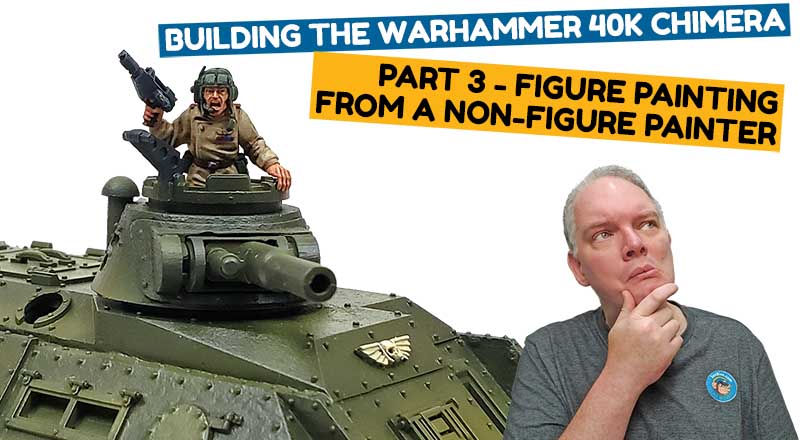Figure painting has always been a bit intimidating for me. I recall trying to paint my toy soldiers as a kid. I had a scruffy, cheap Testors brush, horribly thick enamel paints, and little patience for things like thinning and drying time.
Of course, this meant that everything looked quite blobbish and horrible. And given that these were the soft plastic type soldiers, it only took a few days for the paint to come off.
In my teen years, I had a brush or two that was a bit nicer. And I’d discovered the “wonder” of thinning paints. This did make for less blobbish figures. But as I’d not yet learned about shadows, highlights, and those other finer details.
Before too long, sports, cars, my guitar, and a girlfriend relegated my figure painting to the status of “something I used to do.”
Figure Painting – Keep Practicing
When I initially returned to model building almost 25 years later in 2006, I went back to building airplanes. But remembering my difficulty with figures, all of my builds were without pilots.
It was only when I made a switch to scifi, and added Warhammer 40K to my builds, that I realized I had to face the dreaded figure fear.
Thankfully, there were plenty of resources to help. I began to watched Duncan Rhodes and Mark Sorastro quite a bit. Seeing how those fellows painted minis was very encouraging.
So I gathered up my courage, and started painting. I’ve had more failures than successes really, and quite a few frustrations. Yet I am seeing progress. And I think that is the key.
This video is less about how to paint a mini than it is an attempt to encourage you to paint a mini. As you’ll see, knowledge of the techniques generally precedes ability to execute the techniques with any degree of skill. And I am very early in the journey.
So I carry on. The cool thing is that despite my not so stellar results, I am having fun when you get down to it. The kid in me is saying “Ooooh! You’re painting toy soldiers!”
And sometimes pleasing 10-year-old Jon is good enough. 😉


Leave a Reply